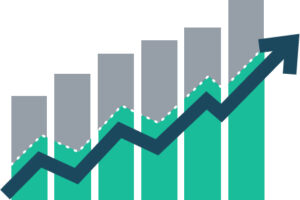The ‘Trump Trade’
What is the Trump Trade?
The Trump trade is a view that less regulation, lower taxes, less immigration and higher tariffs could benefit certain sectors and industries, and have important implications for inflation and bond yields.
What happened in 2016?
Before the 2016 election, the market was focused on sluggish growth, low inflation, and low interest rates (aka “secular stagnation”). Trump’s policies were viewed as stimulative to nominal growth and policymakers actually welcomed upward pressure on below-target inflation.
The first Trump trade was characterized by small caps (which outperformed large cap equities by nearly 8%), the energy sector (which outperformed the broader index by over 10%), the 10-year Treasury bond (yields rose by almost 100bps), and the 2- and 10-year yield curve (which steepened by 17bps).
How are markets responding to the prospect of Trump 2.0?
• Small caps: Small cap stocks rose by 4.6% as Trump’s odds were improving, mirroring the “1.0” trade. Small caps have benefitted from the view that inflation has finally turned the corner and that the Fed will start cutting rates in September.

• Energy: The energy sector rallied in 2016 based on optimism around less onerous regulations and more independent U.S. energy production. Eight years later, the U.S. is now the world’s dominant oil producer. While less regulation could bring even more production, an oil glut could put downward pressure on prices and negatively impact energy company earnings. This time around, the energy sector declined while Trump’s odds were increasing.
• Bond yields: This time, bond yields across the curve have declined since President Trump’s odds have increased, but the yield curve has steepened. Said differently, shorter term interest rates are moving lower faster than longer term interest rates. To us, that suggests that central bank policy expectations are the primary driver of bond yields, and not the election. The key risk for bond markets is that protectionist economic policy, such as increased tariffs and less immigration, will reduce growth and increase inflation at the same time that the extension of tax cuts will increase the deficit.
Overall the Trump Trade 2.0 seems relatively inconclusive. Instead, it appears that markets are reacting more to the increasing likelihood that the Fed will be lowering interest rates with a backdrop of relatively decent underlying economic growth. The bottom line for investors is that we believe the growth, inflation, and policy backdrop will be the primary driver of market moves, but the election will matter underneath the surface.
Rick Barragan is the Managing Director,
Los Angeles Market Manager, for J.P. Morgan Private Bank.
[email protected] | (310) 860-3658
privatebank.jpmorgan.com/los-angeles
Source: J.P. Morgan Private Bank, July 26, 2024 Is the “Trump Trade” a Good Deal? By Alan Wynne, Global Investment Strategist, J.P. Morgan Private Bank.

